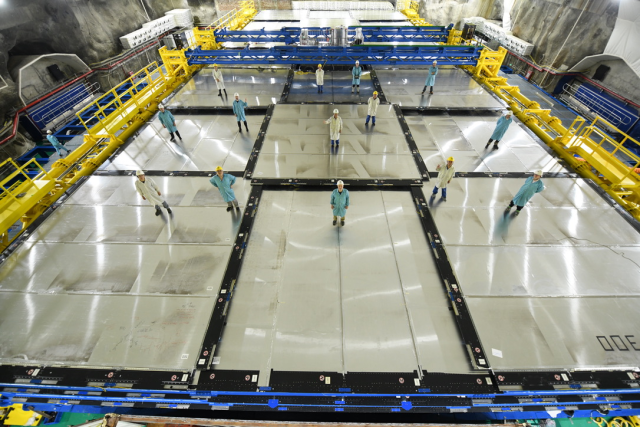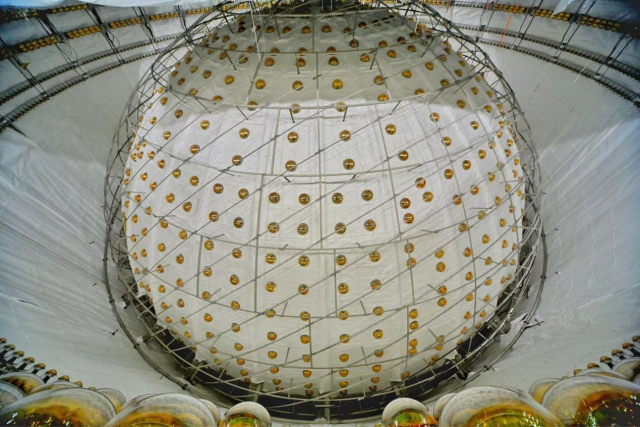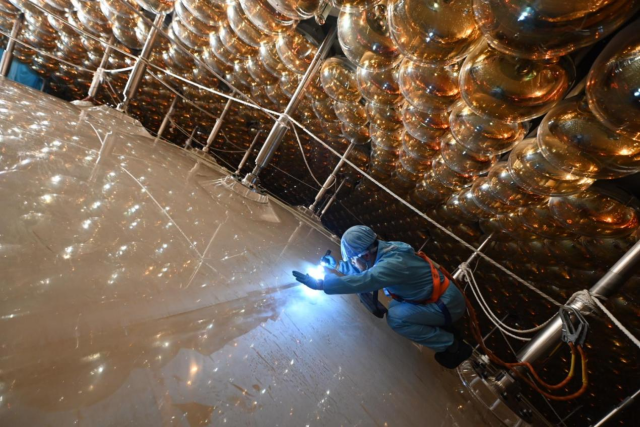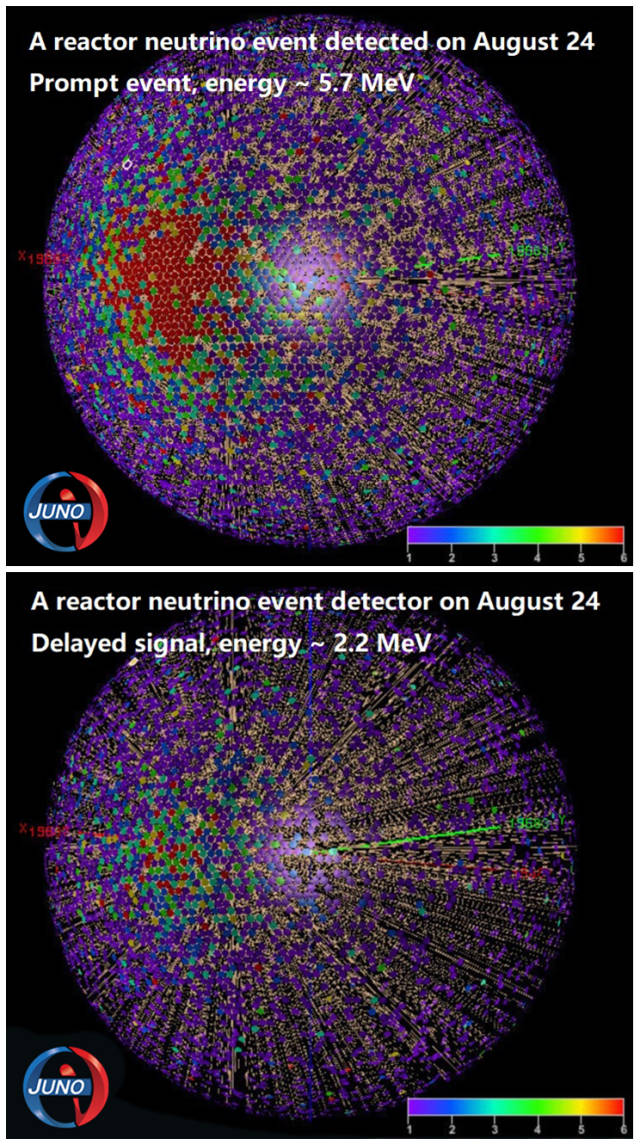A massive underground laboratory in southern China, the Jiangmen Underground Neutrino Observatory (JUNO), has begun operations to unravel one of physics' greatest mysteries: determining the precise mass hierarchy of neutrinos, elusive subatomic particles that traverse the cosmos almost undetected.

Top tracker detector above the water pool.
Nestled 700 meters beneath Guangdong's mountains, JUNO officially started collecting data on August 26 after completing a critical infusion of 20,000 tons of liquid scintillator into its spherical detector. This milestone marks the launch of the world's first ultra-large-scale neutrino observatory.
Neutrinos, nicknamed "ghost particles," pass through entire planets without interacting with matter. Though trillions stream through our bodies every second, their near-zero mass and resistance to detection have long frustrated scientists. JUNO aims to solve a pivotal question: whether the third type of neutrino (ν₃) outweighs the second (ν₂)—a sequencing puzzle whose answer could reshape our understanding of matter's basic structure. Unlike other experiments, JUNO's measurements avoid distortions from Earth's geological interference, delivering unprecedented accuracy.

The central detector (external view) is positioned inside the empty water pool.

Organic glass sphere and photomultiplier tubes inside the central detector.
The heart of JUNO is a 35.4-meter acrylic sphere suspended within a 41-meter stainless steel frame, submerged in a 44-meter-deep water pool. It's 20,000 light-sensitive tubes will capture faint flashes emitted when neutrinos collide with the liquid scintillator, a purified chemical cocktail that glows upon impact. Achieving the required transparency and radiation-free purity demanded half a year of meticulous engineering, with fluid levels controlled to within centimeters during the 20,000-ton transfer. The detector's location—53 km from the Yangjiang and Taishan nuclear plants—provides a steady neutrino stream for study.
JUNO represents a major international scientific collaboration spearheaded by the Chinese Academy of Sciences' Institute of High Energy Physics, uniting 700 researchers from 74 institutions across 17 countries and regions. By the 2030s, it could become the world's most sensitive detector for "neutrinoless double-beta decay," a theoretical process that, if observed, would prove neutrinos are their own antimatter counterparts (Majorana particles). Such a discovery might explain why the universe contains vastly more matter than antimatter.

A reactor neutrino event detected by the Jiangmen Underground Neutrino Observatory (JUNO).
Conceived in 2008, JUNO broke ground in 2015 after securing support from the Chinese Academy of Sciences and Guangdong Province. Engineers spent three years excavating the underground complex before beginning the detector's assembly in 2021.
JUNO joins Hyper-Kamiokande (Japan) and DUNE (U.S.) in a new era of neutrino research. Together, these facilities form a "global triangle" to cross-verify findings.
Author: Feng Huiting
Photo: Nanfang Plus
Editor: Wei Shen, James Campion, Shen He
















